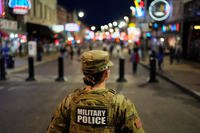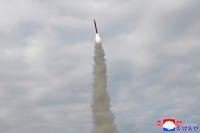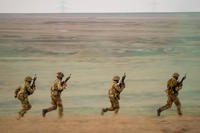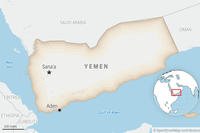The Navy is seeing a surge in Russian submarine activity, and it's posing new challenges to the U.S. and its NATO allies, a top U.S. admiral overseeing missions in Europe said.
The U.S. Navy is doing more in the undersea domain, Adm. James Foggo, commander of U.S. Naval Forces Europe and Africa, told reporters on Wednesday, as submarine competition with Russia heats up.
"This has been one of the busiest years that I can remember, and I've been doing this since 1983," he said. "... Russia has continued to put resources into their undersea domain. It's an asymmetric way of challenging the West and NATO alliance and actually they've done quite well."
Russia this fall held a major submarine exercise in the Atlantic. The goal, according to a report from the Barents Observer -- Europe's northernmost English-Russian news outlet -- was for at least eight nuclear-powered subs to get as far out into the North Atlantic without detection.
Related: Sailors Join NATO Allies in Sub Exercise as Russia Threat Grows
"Such maneuvers haven't been seen from the Northern Fleet since the days of the Cold War," the Barents Observer reported.
Foggo called the report on the Russian exercise "fairly accurate."
"We're seeing a surge in undersea activity from the [Russian navy] that we haven't seen in a long time," he said.
Foggo has for years been warning about the investments the Russians have made in submarine technology. During a Wednesday breakfast event with defense reporters, he said some of Russia's new subs are excellent platforms, quiet and very challenging.
The U.S. still has the competitive edge undersea, but he said more research and development is needed to maintain that position of strength. Exercises with NATO allies are also important, he added. The U.S. and European allies have been participating in new and bigger exercises since Russia's illegal annexation of Crimea in 2014.
Last year's iteration of Trident Juncture in Norway was the biggest NATO exercise since the end of the Cold War. There were 50,000 troops, 70 ships, 265 aircraft and 10,000 vehicles.
"It sends a message, right?" Foggo said. "So if you're President [Vladimir] Putin, you say to yourself, 'That's a pretty significant force and they moved it pretty quickly.'"
Last year, more than 2,000 troops from 10 NATO countries practiced hunting for subs off the coast of Norway amid the resurgence of deep-sea activities from the Russians.
-- Gina Harkins can be reached at gina.harkins@military.com. Follow her on Twitter @ginaaharkins.
Read More: Proposed Ban on Tobacco Sales to Those Under 21 Would Affect Troops














